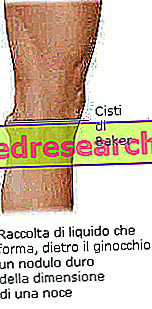Edited by Eugenio Ciuccetti, Obstetrician
At one time the idea of the birth of a new life was linked exclusively to the moment of birth; at the time when the child - considered a tabula rasa - saw the light for the first time and could be physically touched and cared for by his own mother.
Today we know that this is not the case: in fact, during the course of pregnancy, the fetus develops its own well-defined self, its own subjective identity, its own real life. While intra-uterine life is, as such, strictly connected and intertwined with that of the mother, on the other it is already significantly autonomous and far from passive.

As highlighted by Thomas Verny, a Canadian psychiatrist and expert in perinatal psychology, the uterus is not only the first cradle for the unborn child but more, its first real world of experiences. And the way he experiences it will profoundly affect the formation of his future personality. The child in utero, therefore, is not only a biological entity but a real psychic and social individual. And - to a large extent - dialogue, interaction, which in this phase is established with the mother, and with the environment around them, will represent the cornerstone of all her subsequent relationships.
For this reason, then, it is perhaps worthwhile to briefly summarize the extraordinary journey that the embryo first, and then the fetus, have to go through from the moment of conception to the moment of birth. We will discuss elsewhere, in more detail, the complex mechanisms that characterize fertilization. Here we limit ourselves to remembering that this happens, at the level of the tuba, when a spermatozoon - naturally selected among the millions that are ejaculated at every male orgasm - manages to reach and penetrate the mature egg. Thus - from the encounter of the maternal and paternal genetic heritage - a new set of 46 chromosomes is formed which will determine the whole subsequent development of the new life.
The fertilized cell - which at this point, from the tuba, will have to move into the uterus and then nest - immediately begins to divide into a true cluster of blackberry-shaped cells, called blastula. It will be just this, about a week after fertilization, to implant itself in the maternal endometrium, thus concluding the phase of conception.
And from this cluster of cells - which, in addition to multiplying, they also begin to differentiate already in the second week after fertilization, giving rise to the embryonic disc and the yolk sac - both the placenta and the child will derive. At the sixth week of pregnancy (calculated on the basis of the last menstruation, therefore corresponding to about four weeks after fertilization and to two from the first missed flow) we will have a real embryo with the first sketch of head, eyes, ears, kidneys, liver, brain and even an initial beating heart. In the following weeks this process will continue unabated and at about 12 weeks the organogenesis will be completed. From now on we will no longer talk about an embryo but a fetus. From this moment, among other things, a good sonographer will be able to show you the sex of the unborn child.
From the point of view of mere physical growth an embryo goes from two millimeters in the fifth week to 2.5 centimeters in the octave. And again from the six centimeters of the twelfth to the sixteenth of the sixteenth, from the twenty-fifth of the twentieth to the thirty-two of the twenty-fourth, from the thirty-eighth of the twenty-eighth to the forty-two of the thirty-second, from the forty-four of the thirty-fifth to the fifty-fifty-five of the fortieth and last week.
The same applies to the weight: if at twelve weeks we are around eighteen grams, at the sixteenth we arrive at 135, at the twenty-first at 450, at the thirty-first almost at two kilograms and at the fortieth at three and a half kilos.
An embryo of around 24 days, therefore, still measures a few millimeters but has already assembled in a microscopic way all the foundations of its future organism. Not only. It shows evident traces of all elementary vital functions. Week after week the pregnancy will be completely characterized by the progressive physical, motor and sensory development of the fetus; from growth, specialization and refinement of his identity.
The sense organs themselves and their brain centers - in addition to the musculoskeletal apparatus - are formed from the embryonic period and already from this stage the unborn child begins to react to the stimuli of the world around him. All sensory channels will then be active by the end of pregnancy.
Already around the ninth week, for example, a stimulation in the mouth region may cause some significant facial motor reactions in him. At week 11 she will move for more than 10 percent of the time (even if her movements are still not perceptible to her mother) and will begin to perform breathing movements. Gradually he will learn to suck and swallow the amniotic fluid. He may even manifest a sort of hiccup. Furthermore, around the sixteenth week, he will have developed a sense of taste and, if the maternal belly is illuminated violently, he will react by turning his head and increasing his heart rate.
Starting from the eighteenth to the twentieth week of gestation, the mother will begin to perceive her movements in an increasingly distinct and regular manner. The fetus can now move its arms and touch, or even grab, something. A finger, a foot, the umbilical cord. In short, he will make his first experiences. He will own and develop all the movement modules of the human species. And it is through his movements that the mother will be able to interpret the signals. He will understand when he is sleeping, if he is awake, if he is calm or agitated.
Second part "



